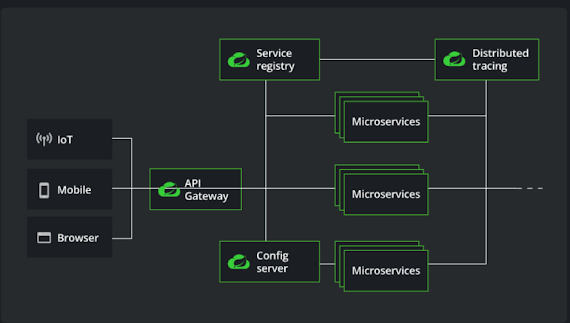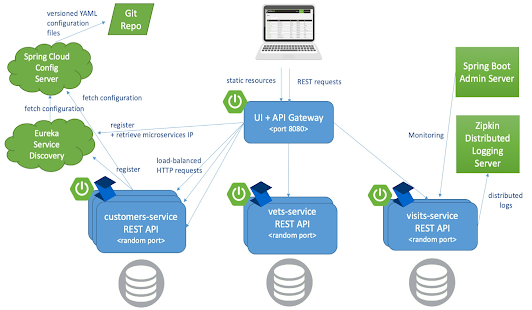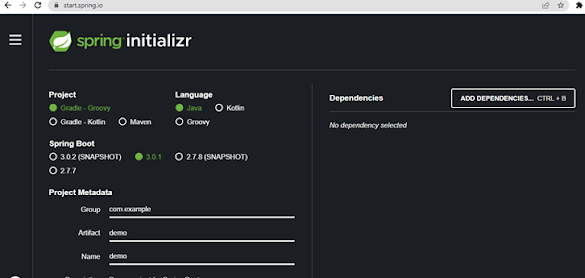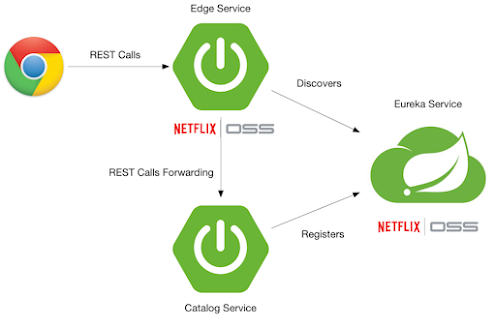Hello guys, if you are wondering, what is difference between Spring Boot and Spring Cloud then you re not alone. Many Java developer are not familiar with various spring boot projects like Spring Security, Spring Data JPA, Spring Batch, Spring Boot, Spring Cloud etc and this lack of knowledge prevent them from taking full advantage of Spring Framework. In last article, I have explained difference between Spring framework and Spring Boot and in this article we are going to discuss the difference between Spring Boot and Spring Cloud. Before we dive into the difference between the two terms. Let us take a look at different terms like Spring, Spring Boot, and Spring Cloud.
What is Spring Framework in Java?
Spring is an open-source Java framework used for the development of scalable enterprise applications. This framework is widely appreciated for managing the business object (also called beans) dependencies.
Furthermore, Spring framework eases the development of web applications compared to classic Java APIs and technologies such as Java Database Connectivity (JDBC) connectivity, Java Servlet, and Java Server Pages (JSP). The framework also provides functionalities like
- Spring MVC (Model View Controller)
- Spring ORM (Object Relational Mapper)
- Spring Test
- Spring AOP (Aspect Oriented Programming)
- Spring Security
These modules can be used separately in a web application or can be grouped to achieve better functionalities.
What is Spring Boot in Java? What Problem does it Solve?
Recognizes as a Rapid Application Development (RAD) platform. It builds on top of the Spring framework therefore it uses various components from it. Unlike the spring framework, this framework follows a loosely coupled architecture hence, can easily be plugged in with modern UI frameworks like React, Angular, etc.Spring Boot can quickly develop production-ready standalone web applications. Framework widely used to create RESTful APIs and Microservices. It auto-configures the spring functionality when needed.
Here beans are initialized, configure, and auto-wired by the framework itself. Spring Boot comes with its embedded server, hence reducing the complexity of deployment.
Here is a nice diagram which shows what Spring Boot does and how it makes Java application development using Spring Framework even easier:
What is Spring Cloud in Java world? How it helps?
To take advantage of cloud services in our application we make use of the Spring Cloud framework. As discussed Spring Boot is used to create production-ready stand-alone web applications. Here comes a question in mind.What if my application has to make calls to other APIs in a distributed environment? What happens if an API call fails? Will there be a load balancing mechanism to distribute the load equally between the instance of a single server?
The answer to these questions lies in the use of the Spring Cloud framework. It packs the following functionalities that are crucial for a modern distributed system.
• Load balancing
• Circuit breakers
• Service-to-Service call
• Service discovery
• Distributed configuration and distributed messaging
• Spring Cloud Security
Here is a nice diagram which shows a couple of Spring Cloud features which can be used in Microservice development in Java:
Difference between Spring Boot and Spring Cloud in Java
And here are the key differences between Spring Cloud and Spring BootBoth are part of the same framework i.e. Spring Framework. The former works for microservices to manage configuration whereas the latter creates the microservices.
Spring Boot is a stand-alone framework where as Spring Cloud is part of Spring Boot.
Spring Boot focuses on the developer’s productivity and reduces the development time, whereas Spring Cloud maintains the network traffic.
1. Based on Library
Both the libraries are open source, hence anyone can download the source code and tweak it according to their business need. Let’s take a deep look at how to set up both projects.1.1) How to setup Spring Boot App
Setting up a Spring Boot project is straightforward. All you need to go to https://start.spring.io and choose a project type (Maven, Kotlin, or Groovy), programming language (Java, Kotlin, or Groovy), insert project metadata, and finally choose your project dependencies. The below image shows how to set up the Spring Boot application.
1.2. Setting Up Spring Cloud
As mentioned earlier, like other modules Spring Cloud can be plugged into the Spring Boot application. Simply you need to add the following dependency in your pom.xml file
1) Add Cloud-Config dependency
<dependency>
<groupId>org.springframework.cloud</groupId>
<artifactId>spring-cloud-config-server</artifactId>
</dependency>2) Create a local git repo
$ mkdir git-local-repo
$ cd git-local-repo/3) Setup application properties
server.port=8081
spring.application.name=config
spring.cloud.config.server.git.uri=file://${user.home}/git-local-repo2. Microservices
Spring Boot plays its role in the creation of microservices whereas Spring Cloud manages the configuration.In cloud-based applications, one major problem is maintaining and distributing configuration to the services. None of us want to spend time configuring it according to each environment whenever there is a need for scaling the resources.
Here comes Spring Cloud into the picture. To solve this we will link a single Git repository that controls the configuration of all of our applications, which will house all of our settings, that’s how we put up a rather straightforward implementation.
3. Based on Features
Now, let's compare Spring Boot and Spring Cloud based upon their features:Spring Boot
Spring Applications: Manage all the beans residing in the IoC container.
Web Applications: Embedded servers can be used to establish an HTTP server. The application is responsible for the deployment of war files.
Security: It ensures that every HTTP endpoint is secure with basic authentication.
Spring Cloud
Load Balancing: It tries to distribute the load equally among the resources or its instances.
Service-to-Service call: Here, services may find one another and interact.
Locking Mechanism: It allows threads to access the shared resource in a mutually exclusive fashion.
Circuit Breaker: When an API request to another microservice or system fails, circuit breakers are utilized as a backup plan.
4. Usage of Annotations
Here is the list of a few annotations that are used by Spring Boot and Spring Cloud.Spring Boot
1. @SpringBootApplication
2. @ContextConfiguration
Spring Cloud
1. @EnableConfigServer
2. @EnableEurekaServer
Fig-02, Depict @EnableEurekaServer annotation.
That's all about difference between Spring Framework, Spring Boot, and Spring Cloud for Java developers. In this article, we try to learn the difference between Spring Boot and Spring Cloud. What’s their purpose and how to use them in our application? We also compared them based on the library, annotation, and features they offer.
- Top 5 Courses to Learn and Master Spring Cloud
- 10 Books Java Developers Should Read
- 10 Things Java Developer Should Learn
- Top 5 Courses to learn Spring Cloud and Microservices
- 5 Free Courses to Learn Spring Framework
- Top 10 Courses to learn Microservices in Java with Spring Boot
- 5 Spring Books Experienced Java Developer Should Read
- Top 5 Books and Courses to learn RESTful Web Services in Java
- 5 Courses to Learn Spring Security in depth
- Top 5 Frameworks Java Developer Should Know
- Top 15 Spring Boot Interview Questions for Java Developers
- 10 Tips to become a better Java Developer
- How to use @RequestBody and @ResponseBody in Spring
- 10 Advanced Spring Boot Courses for Experienced Java Developers
- 10 Spring Boot Annotations Java Developers should know
Thanks for reading this article so far. If you like my explanation of difference between Spring Boot and Spring cloud and then please share them with your friends and colleagues. If you have any questions or feedback, then please drop a note.







No comments:
Post a Comment
Feel free to comment, ask questions if you have any doubt.